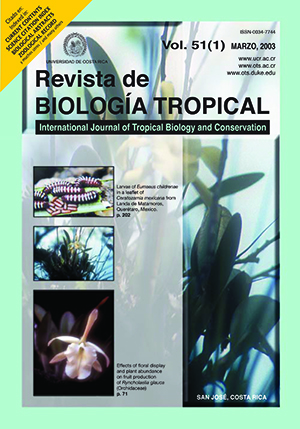Abstract
The physico-chemical characteristics and phytoplankton of Awba reservoir in the University of Ibadan, Nigeria, were monitored to determine the impact of eutrophication on phytoplankton composition. The principal component analysis identified three major components influencing the physicochemistry of the water, namely trace metals, dissolved oxygen and ionic composition. Comparative analysis with a previous study showed a phenomenal increase in zinc, copper and iron levels over a 10-year period. Furthermore, the ferruginous nature of the soil contributed to the high levels of iron which exceeded the World Health Organization Standards for drinking water quality. The most abundant phytoplankton species was Microcystis aeruginosa which has been implicated in toxic blooms in freshwaters. The conditions favouring cyanophyte blooms and their implications are discussed.
##plugins.facebook.comentarios##

This work is licensed under a Creative Commons Attribution 4.0 International License.
Copyright (c) 2003 Revista de Biología Tropical
Downloads
Download data is not yet available.


